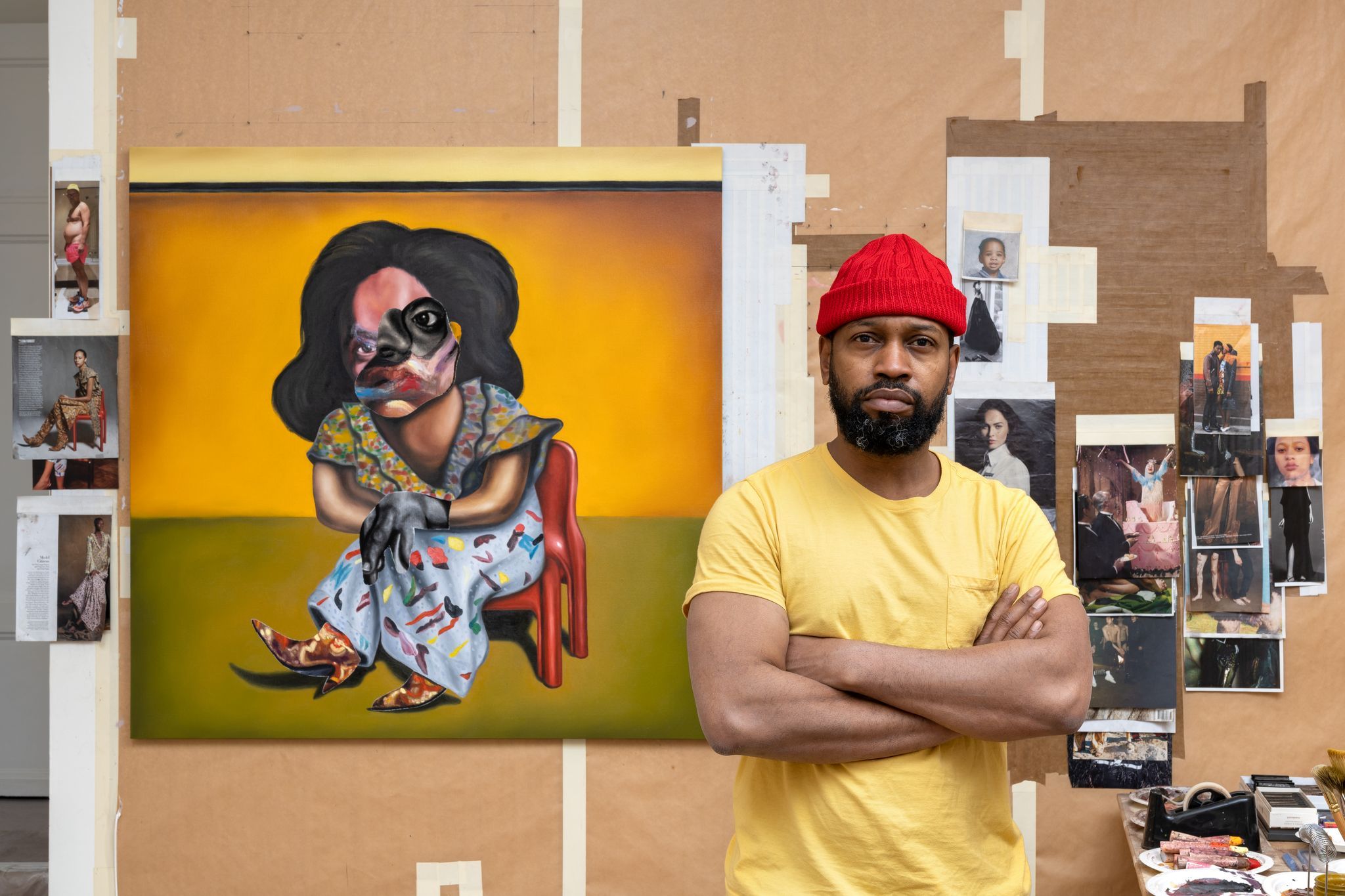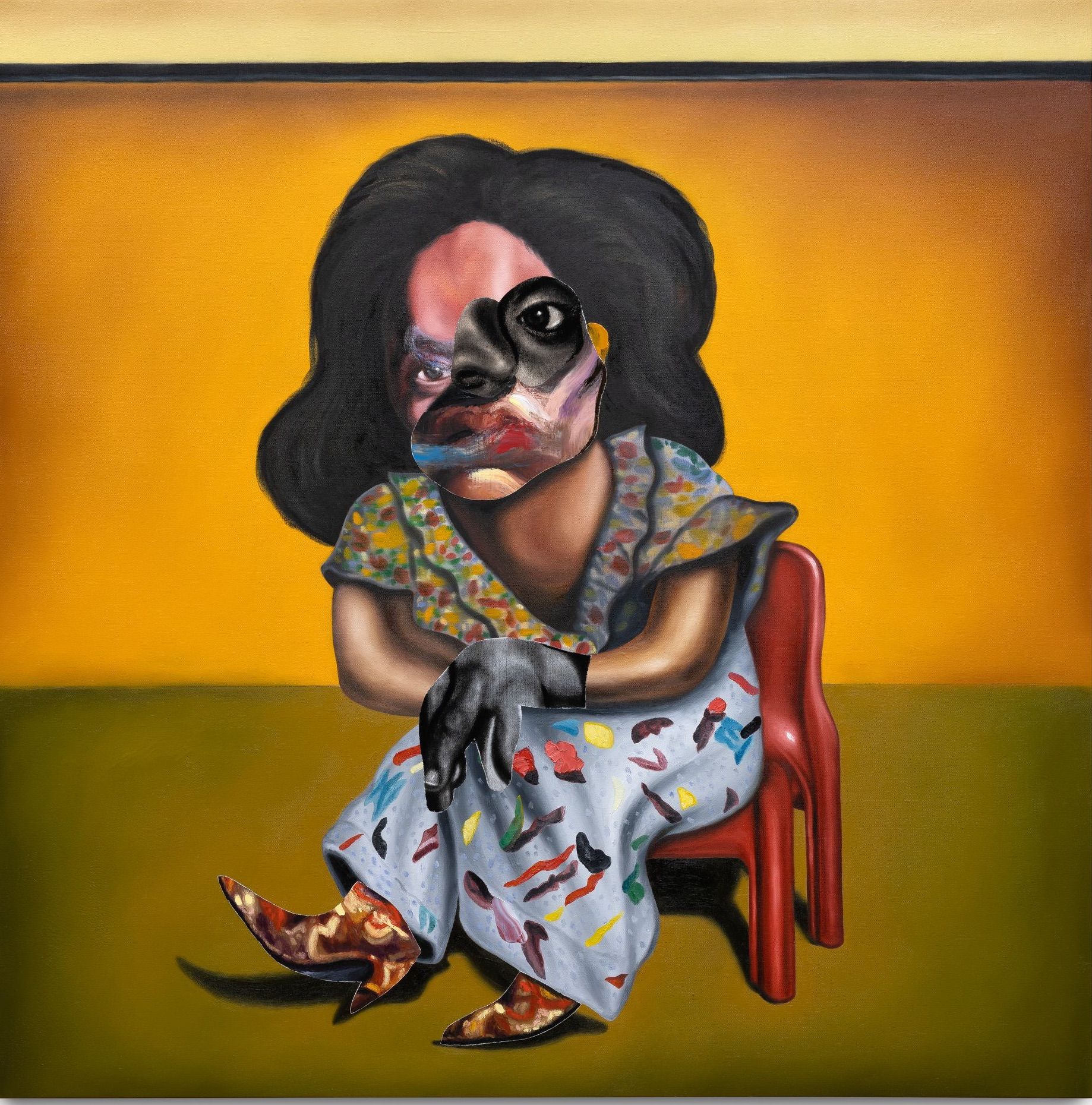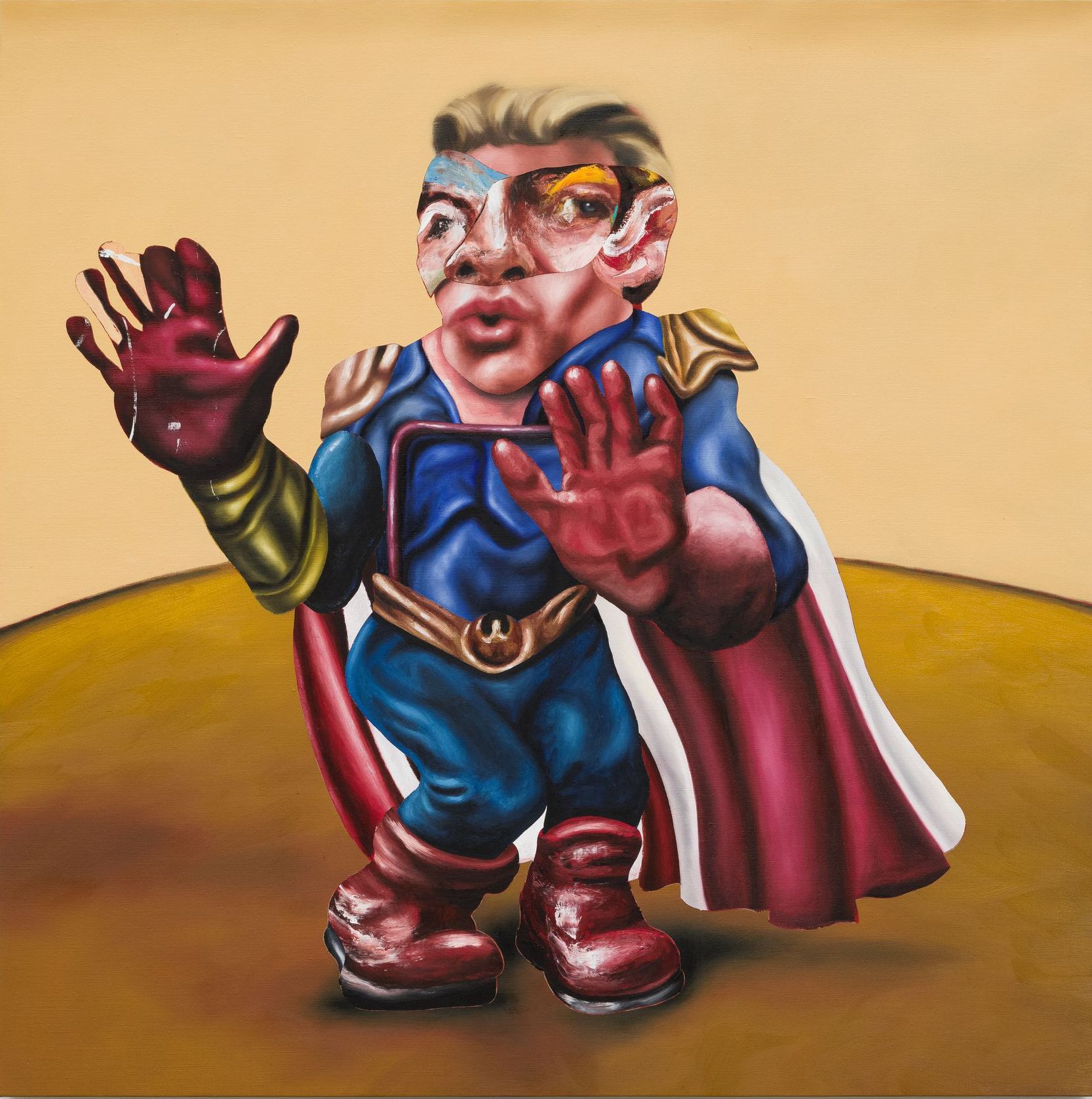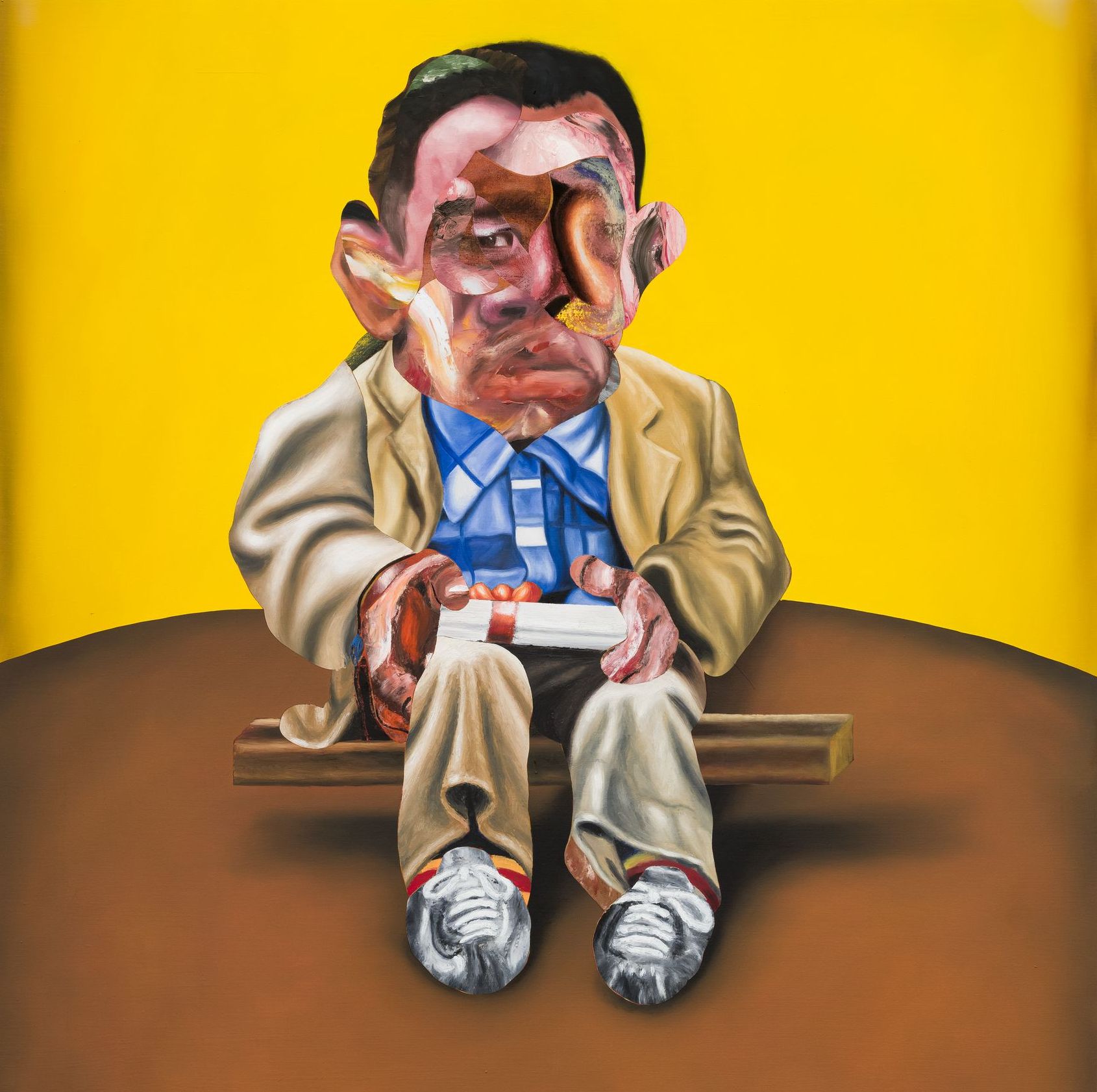
The American abstract figurative artist Nathaniel Mary Quinn has the kind of backstory that Hollywood loves to turn into movies, so it’s more than a little interesting he has decided to turn his attention to film in his latest series of portraits, currently showing at Almine Rech gallery. To cut a long, and fascinating, story short, Quinn spent his formative years in Chicago’s notoriously violent Robert Taylor housing project. His mother’s unwavering commitment to his upbringing fostered an innate talent that led him to receive a full scholarship to the prestigious Culver Military Academy, but soon after he began at the school, he lost his mother. He was subsequently abandoned by his father and brother, both of whom he discovered had disappeared upon returning home from school one summer. He had to fend for himself from that point on. His success then is testament to a truly indomitable spirit, and given his background it is perhaps unsurprising that his work delves into a complex web of human emotion that deconstructs identity, presenting strangely distorted beauty in collage-like fractured portraits that reference everything from Francis Bacon to Cubism and the MCU. Here, the artist who adopted his mother’s name as his own, speaks to Culture Collective about championing stories of the human spirit in his latest show, devoting yourself to your work, and the profound emotional impact of Francis Bacon.
What would you say drives you?
Work is core to my value system. I believe in competition, and I am just more than happy and willing to compete, you know? I don’t believe in excuses. I never bought into the construct of victimhood with regards to race, because it's not real. I don't care what your skin colour is, I'm just going to outpace you, no matter what. We all have barriers in life. We all do. Everyone has struggles, everyone has challenges, and they come in many different forms, you know? There are poor working class white folks too, who are struggling, and their stomach grumbles just like mine. And that hunger is just the body in need of energy. How you going to get that energy? You got to work. I believe in one's individual ability to pull themselves up and make something of themselves.

How much do you think art can be a catalyst for change?
I think that the power of art lies in telling the story of the possibilities of the human spirit. I think it does have the power to give the viewer a sense of hope, and belief that they can achieve something greater than themselves. And I do think art can help people to embrace their own fragility and vulnerability, and doing that makes you more powerful. The more powerful as a human being you can become, the more empathetic you can be to other people, because you can better sense other people's fragility as well, and you'll be more effective in listening to people; being loving to other people. I believe in art having that kind of power, but I'm not sure that the tentacles stretch deep enough to bring about political change.
How did being abandoned at 15 years of age shape you?
I think that experience shaped my view of the world in such a way where the significance of surviving became extremely important. It was paramount, because getting good grades meant I could keep my scholarship and keep my roof. I couldn't go back home because I grew up in a very violent community, so I figured, well, let me just stay in this school and see where it takes me, because this seems to be the safest route. Then after school I kept it going, and I went to college because I had nowhere else to go. When I left college I got a job as a teacher and was making my own money. I had an apartment, and I was able to feed myself. And every night for about two hours a night, I was able to make art. I was in bliss. I was happy. I had made it. And for me, if my life would've ended up like that for the rest of my existence, I would've been happy as pecan pie.

The works in this show reference Francis Bacon, why is he important to you?
I just feel I am learning from his works, you know what I mean? I'm not trying to make works like Bacon, but am learning from a great artist. I felt a real kinship with Francis Bacon when I saw that Man And Beast show at The Royal Academy, and I think that's the primary reason I was crying when I saw it. He’s a guy born at a different point in time, but I had this feeling almost like we fell from the same tree at two different points in history. I was so moved. It is the best exhibition I've ever seen in my life.

All of these paintings have a basis in the film. Talk to me about the image of Forrest Gump in the show. Why did that film resonate with you?
In the film Forrest meets this soldier named Bubba during the Vietnam War. And Bubba had this obsession about starting a shrimp company. Bubba didn't survive the war, but Forrest remembered his friend and that shrimp company that he wanted to start, so he carried it forward and started the company. And at some point, he went to Bubba's family and gave them a life-changing cheque. So this painting is like the amalgamation of both Forrest and Bubba, because I was always so moved by that friendship that they had, and by the way that it was a story about a character that was developmentally delayed, but it turned out that being developmentally delayed was his superpower
Scenes is at Almine Rech until November 12
Images (Top to Bottom): Portrait of Nathaniel Mary Quinn by Nicolas Brasseur, 2022; Sunshine, 2022; Nathaniel Mary Quinn - oil paint, black charcoal, gouache, oil pastel on linen canvas stretched over wood panel; Homelander, 2022 - oil paint, oil pastel, gouache on linen canvas stretched over wood panel, photography by Charles Roussel; Nathaniel Mary Quinn, Bubba Gump, 2022 - oil paint, oil pastel, soft pastel, gouache on linen canvas stretched over wood panel, photography by Charles Roussel. All image courtesy of the artist and Almine Rech